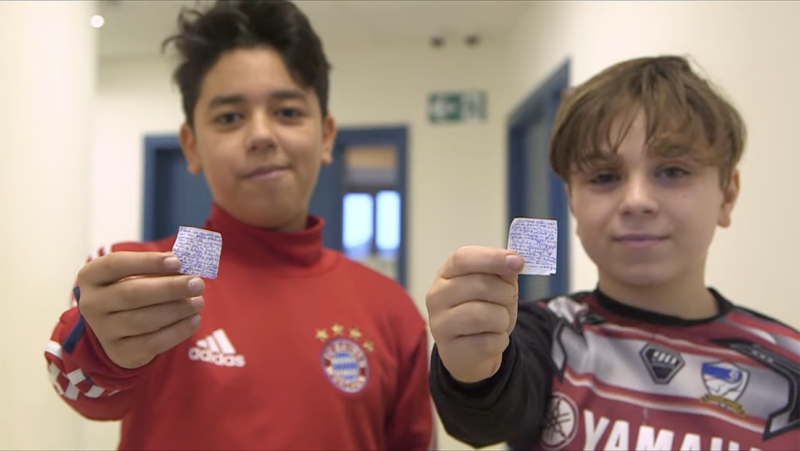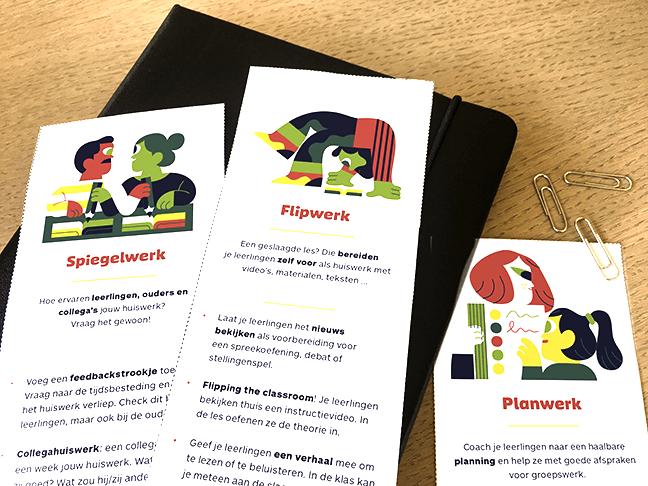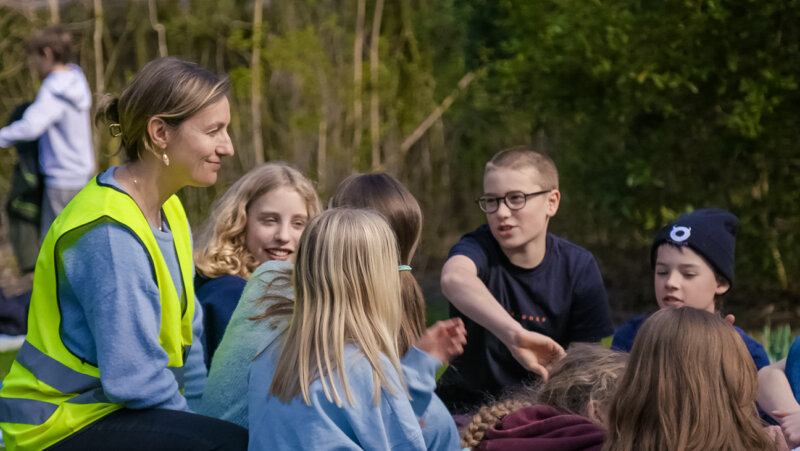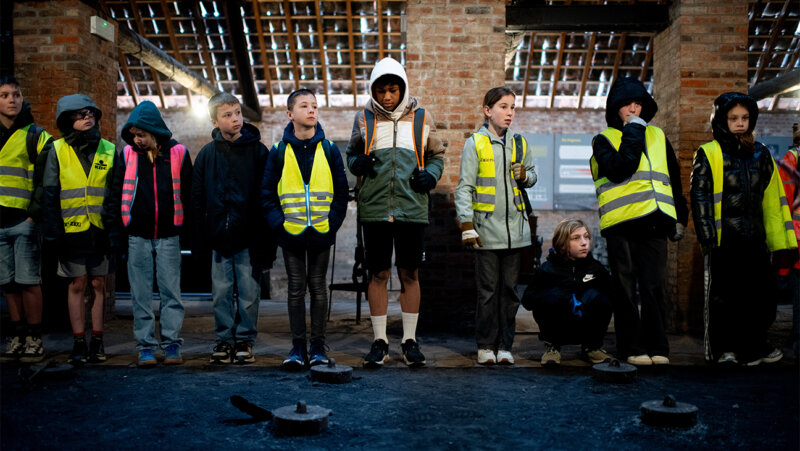Deze spraak-naar-tekst is automatisch gecreëerd met www.amberscript.com
Hello everyone and welcome to this second podcast. This is the podcast about time. And before you continue listening I suggest that you take your book which starts some page 13 and also open up the file the PowerPoint file on smart school that has some extra information on it to help out and to pinpoint the really important bits. So press the pause button and then continue once you’ve opened up those documents.
So before we take a look at the PowerPoint, let’s take a look at your court book first on page 13. It also has on the bottom of that page a grid that says what will you have to be able to do after this lesson. So in detail you can find all the things you really have to know and study, as well as on the PowerPoint you have this small logo with the owl that tells you the important things you need to know. When you study this … Well better yet after you study this you could also do a practice test. I’ve put a practice test on smart school. You can find that under Web links and then you just click it. It’s a Google forms you fill in your name, your surname, your class and then just answer the questions. And once you press submit it you should receive the answers and your score. And this is just a practice you can do this as many times as you want but it gives you a good idea of what kind of questions are going to be on the real test.
So the first thing we did in this unit is we had to look at the calendar that we use and the calendar here in Belgium and the rest of the Western world is based on the Christian calendar and the starting date for it is one year one. Not your zero but your one. And then there were four important words that we learned the words for “Voor Christus” en “Na Christus”. And in English there are four because well they added two more neutral terms as well. We start with the term B.C. which means before Christ and the other term is A.D. Uno Domini which means in the year of our Lord and Lord refers to Christ. Then because in the English speaking world people wanted to have a more neutral term they sometimes use the terms B.C.E and C.E. Especially in recent years more and more. These last two terms are used so you will have definitely have to know those as well. A.D. is the same as C.E. and that means common era. And B.C.E is the same as B.C. and that means before common era.
If you take a look at your PowerPoint I’ve included an example of that and these four terms are are important and you have to know them. We’ve also seen that there is another important word to know and that is the what an anachronism is. An anachronism is something that does not belong in the time period that. So something that’s mixed from two different time periods and it’s out of place there. On the PowerPoint I’ve given you a few examples there are four comics or at least parts of a comic and you can have a look at them and try to figure out what exactly is going on there. What’s wrong about it. There’s also an explanation next to it to check yourself. And the other term was circa if we don’t really know the exact date then we use a circa it means about.
The Christian calendar is not the only calendar that exists all major monotheistic religions and one of these and means that they only believe in one God. All those religions have their own calendar. Now most of the world does use the Christian calendar because of economic reasons and political reasons, but locally people from the Muslim world and the Jewish world they do use their own calendars. So on page 15 you have an overview in your book and the PowerPoint slides I’ve used with the owl says you all the things you really need to know about them. So you have to know the name of these religions Christianity, Islam, Judaism you have to know the people that follow these religions the Christians, the Muslims, Jews or Christian people, Muslim people, Jewish people. You have to recognize the symbols know what they look like. You have to be able to identify them. You have to know the names of the holy books. So the Bible for Christians, the Koran for Islam the Torah or the Talmud for Judaism. You have to know where they pray, where they worship. For Christians in a church or a cathedral for Islam in a mosque for Jews in synagogue or temple. And also the religious leader is a religious leader the priest is a mom and a rabbi. But most importantly you have to know the starting date of the calendar, so year one for the Christian calendar because people believe that Jesus Christ was born then. Although sometimes historians now say it might have been later than for Islam the important year is 622 A.D.. For them. Their prophet Mohammed fled from Mecca to Medina and in their religion. This is an important moment. And they use this moment to start their calendar. And Jewish people they think or believe that the world was created in three thousand seven hundred sixty or sixty one B.C. and that is their starting date for the calendar. So you really have to study that grid on page twelve.
A really other important thing that you have to study is or are the seven time periods prehistory near Eastern civilizations, classical antiquity, middle ages, early modern history, modern history and current history. You have to know all seven of them. You have to know their names and you have to know when they end and when they finish. This is something you have to study by heart. What can I ask. When I test you on this well I can give you a source for instance and it might have a date and I could ask you well in which time period does it belong. I can give you a time period and you have to give me the starting date and the ending date. So these are the things you really really have to study. You have to know them by heart. The good news is you can keep remembering them throughout all of secondary education. So you will have to know this until you you’re in the last year of secondary education.
There are some other terms that are sometimes used and I’ve told you on the next slide that there is a difference between acid active knowledge and passive knowledge. You have to be able to recognize the other terms. So if in the text Ancient Near East is mentioned or medieval period is mentioned or contemporary history you have to know that they mean current history or Middle Ages or near Eastern civilizations. So it’s ok that you can only use one actively but you have to recognize the other one’s that on the next slide you have a nice timeline. Showing you all seven time periods.
We’ve also seen some important words like a year, a decade, a century, a millennium. You have to know how long these were you have to know these these words as well so you have to study that. Another important term was chronology putting things in the correct chronological order means putting the oldest ones first the oldest events or your oldest people or persons of whatever whatever it is you’re putting in order and the latest ones at the end of your timeline.
Then you also had an exercise with flags. I had to put some some flags or logos in the correct chronological order and you have to recognize these flags. This is the final thing in your curriculum that you have to study and so you have to know and recognize these. After that sequencing centuries so centuries were even that was one of the words that we already learned. And you have to know when does this century start and when this is a century end. So on a test I could give you a date and you have to be able to put that date in the correct century. So for instance if I tell you when or in which century was the year 319 you have to be able to tell me that was the fourth century or if I ask you when the second century start. You have to be able to tell me. It started in the year one hundred and one and it ended in two hundred. So this is this is also something you have to study. You have to know this.
And the last thing we did during our lesson about time was learning about continuity and change. Continuity means that means that things stay the same over a longer period of time and change means that things become different. And I’ve explained it with a Garfield image and on the last page of the PowerPoint that’s on smart school. I’ve also included two comics also about Garfield. And if you take a good look at them you can see it in the first comic. The main character John the owner of Garfield uses an old telephone. It’s a telephone that still has a wire that use the landline to make phone calls whereas in the second comic they use smart phones. So that is an example of change. You know they’re still calling people. That’s continuity. But the device that they’re using that looks very different. One has a wire. One does not. So that’s an example of change vectors still calling each other is is a fact that is an example of continuity so I think I’ve covered all the important bits and I’m going to finish my podcast here.
Deze spraak-naar-tekst is automatisch gecreëerd met www.amberscript.com






valerie-haemers1
13 februari 2020In één woord : knap!
Rien
13 februari 2020Is dit een app op je gsm? Zo ja, wat is de naam van de app aub? ??
Liesbet Heyvaert
14 februari 2020Hoi
Welke podcast-app werkt het best om te gebruiken voor de leerlingen?
Hartelijk dank!
Liesbet
Rob
28 februari 2020Het is niet te geloven dat niet meer leerkrachten hieraan gedacht hebben! Een podcast heeft drie fantastische elementen; leerlingen kennen het al, de inhoud steunt ze enorm en het is weinig werk voor de leerkracht.
Uit ervaring merk ik dat iedere leerkracht altijd het beste wil voor de leerlingen en daar gaan ze ver in, van werkblaadjes tot uitbreidingsoefeningen. Het nadeel hiervan is dat leerlingen het saai vinden, het meestal niet invullen en op het examen niets mee kunnen doen. Hier is, zoals Jeroen Schouppe zelf aanhaalt, een podcast een perfecte aanvulling op. Het is namelijk niet saai, je kan het meerdere keren beluisteren en duurt maar 15 minuutjes om in te spreken.
Daarnaast toon je aan de leerlingen dat logge systemen, zoals een school, ook moderne en handige tools kunnen aanreiken. Dit vind ik een mooi voorbeeld van ‘out of the box’ denken, een vaardigheid die ik ook aan alle leerlingen wil meegeven. Je moet niet altijd harder werken, wel vaak slimmer.
Samengevat kan ik dus enkel leerkrachten aanraden om ook zoiets te zoeken. Niet iedere leerkracht hoeft podcasts te maken, maar je moet kijken naar de noden van de klas. Zo kan een klein theoriekaartje op een exit card meer effect hebben op een groep. Door je klas te leren kennen kan je samen groeien.
Laat een reactie achter